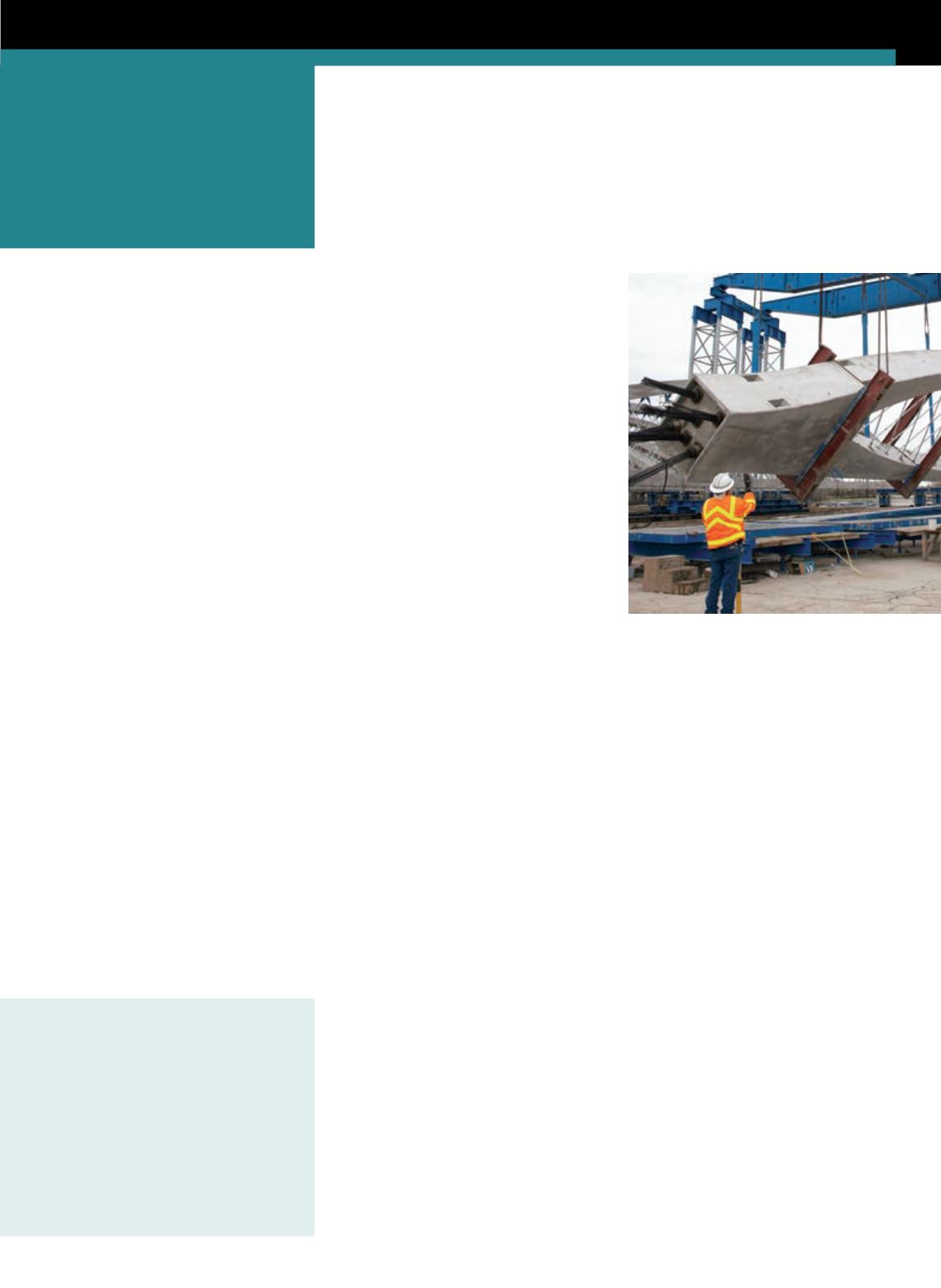
SAFETY
culture. If every safetymeeting
or communication is incident or
problembased, the safety culture
quickly turns negative. The
unanticipatedbenefit of happier
employees, cooperation, and
improvedmoralehas been seen
in almost every instancewhen a
program is tried.
■
An increased interest inpersonal
fitness for employees. If an employee
realizes that they either enjoy the
feelingof stretchingor the opposite,
they aremuchmore out of shape than
they realized, both feelings can lead
to adesire for anoverall healthier life.
This action alsohelpswith employee
happiness, decreasedmedical
insurance costs for companies, and
other benefits.
In conclusion, for those companies
having troublewith these injuries I issue
a challenge to at least give a stretching
program a shot on a trial basis. I don’t
seehow it canhurt us but thepotential
benefits aremany andhave beenproven
multiple times over, let’s seewhat
happens.
■
17
JANUARY 2015
ACT
periods of intense gym-likeworkouts
while settingup the crane, securing the
load, carrying the rigging, etc. followed
by longperiods of sedentary time. These
activities alternate throughout theday,
withmuscles resting and constricting
during rest and then immediately
being stressed for lifting andmoving.
Ifwe looked at our trends, wewould
discover that a largemajorityof our
musculoskeletal injuries occur in the
beginningof aworkdayor shift, when the
muscles are at their tightest after anight
of rest and traveling (sometimes long
distances) towork.
Companies that have implemented
group stretching routines have almost
always seenmultiple benefits, some
thatwerenot discovereduntil after the
commencement of theprogram. A fewof
these are listed in continuation:
■
A reductionof bothdirect and
indirect, (the ratio is normally 5-to-
1) costs associatedwith strains,
sprains, and similar injuries. There
arenumerous examples of this I have
seenor that are available on theweb
for review, one is as follows: A recent
flexibilityprogram amongmunicipal
fire fighters evaluated the incidence,
cost and severityof joint injuries
in stretchers versus non-stretchers.
Fire fighterswhoparticipated in the
programweremore flexible than
non-stretchers after sixmonths of
stretching. Andmost compelling, the
total dollars spent because of injury
was $85,372 for stretchers versus
$235,131 for non-stretchers.
■
An increase indiscoveringweekend
or night injuries thatwouldhave been
reported aswork-related injuries
within anhour or twoor beginning
work. If theperson comes towork
after aweekendor night away and
cannot perform the basic stretches
it ismuchbetter to investigatewhy
not at that point thanwaiting for a
reported claimwithno idea as to
whether or not the employeewas fit
for duty at the beginningof the shift.
■
An increase in employee togetherness
andoverall positive safety
Daniel Erwin reports that
workplace stretching can
reduce the chance of
musculoskeletal injuries.
Is this a
stretch?
M
usculoskeletal issues –
including sprains, strains,
back injuries and the
like– are a frequent causeof injury in
the transportation, crane and rigging
industries.We lament this fact, commonly
question the veracityof the claims, and
even try to implement pre-placement
physicals as adeterrent. Statements such
as “I guess it’s just apart of being a rigger
or driver” are fairly commonplace. Ifwe
look at amoreproactive approach, there
is amethod that has beenprovenhelpful
innumerous studies thatmost of us are
not trying–workplace stretching. Now,
I can almost hear the groans, and see the
eye-rolls that tookplace in some readers
at that last statement. For some reason,
the very ideaof stretchingusually elicits
that response in this industry; Iwill admit
that I donot quiteunderstandwhy.
Stretching, whendoneproperly,
lengthens themuscles, (wenormally say
warms themup), and increases their
flexibility. The benefit of stretching is
one thatwe recognize as humans, (and
many animals), shownbyourmorning
stretch and yawn thatwedowithout
thinking.We stretchbefore beginning
aworkout at the gym, whichdoes not
seem strange tous. We stretchbefore
beginning a run, jogor a briskwalk.
There are literally thousands of group
stretch classes operating in gyms across
theworldwithnames likeYoga, Pilates
and countless others.
Formanyof our employees their
workday consists of aperfect storm
formusculoskeletal injuries. There are
‘‘
Sprains, strains, and
back and neck injuries are
a frequent cause of injury in
the transportation, crane
and rigging industries.
A largemajority of musculoskeletal injuries
occur in the beginning of aworkday or shift,
when themuscles are at their tightest after
a night of rest and traveling (sometimes long
distances) towork.


